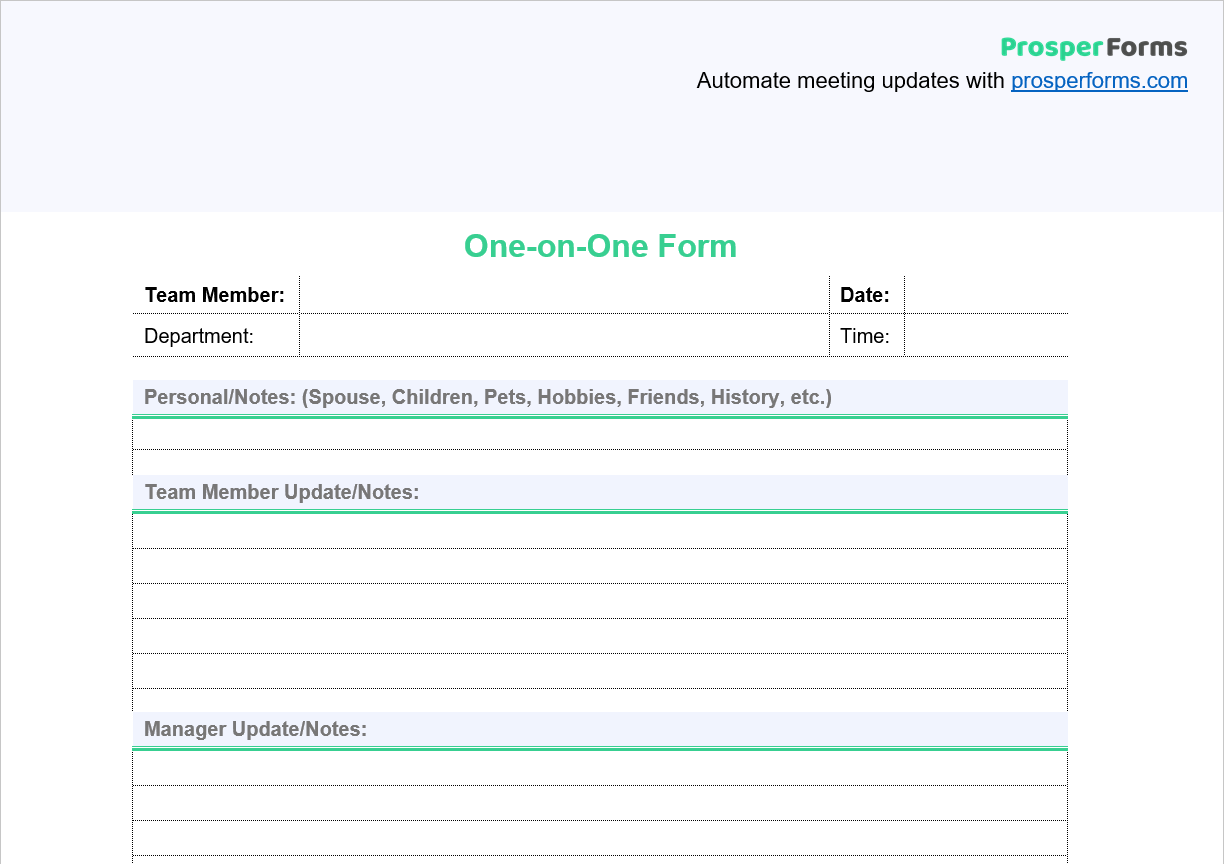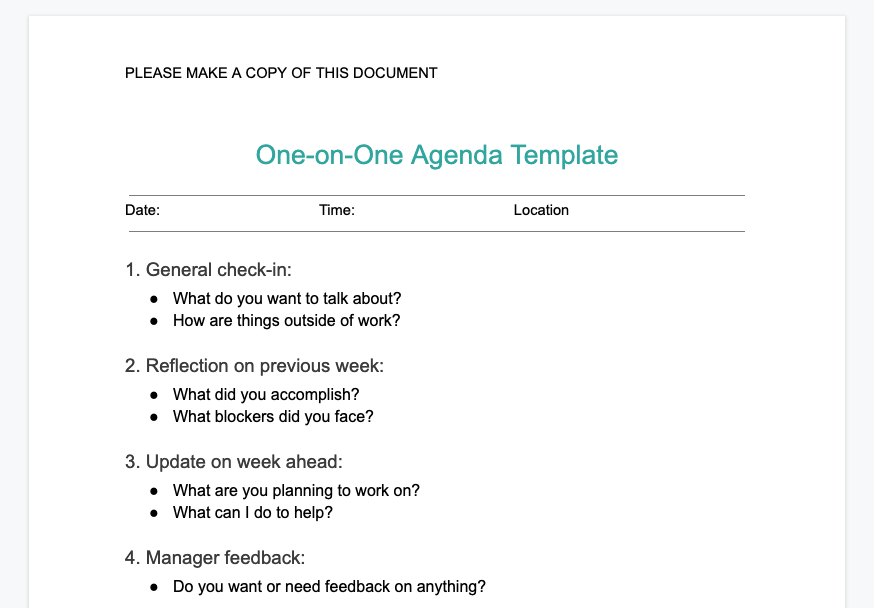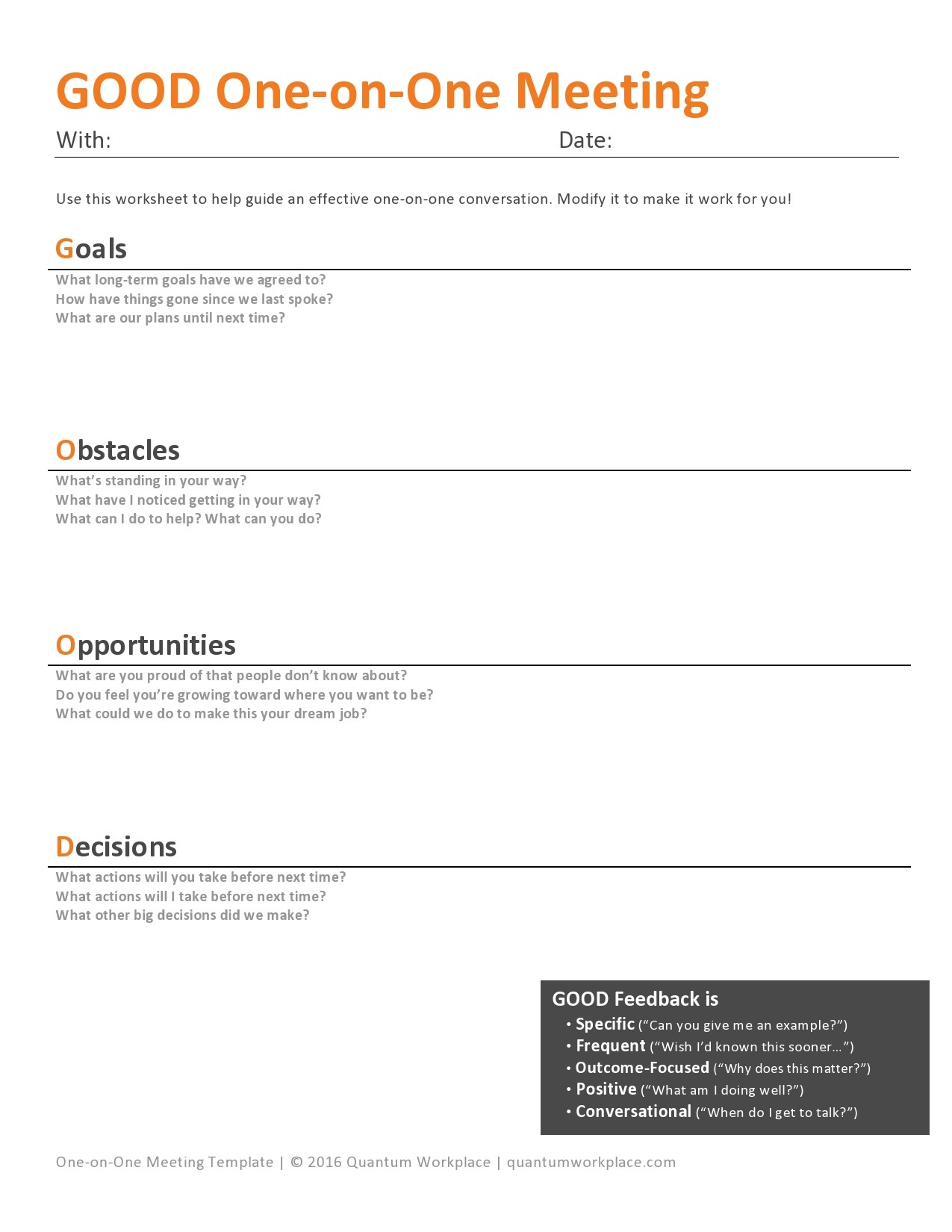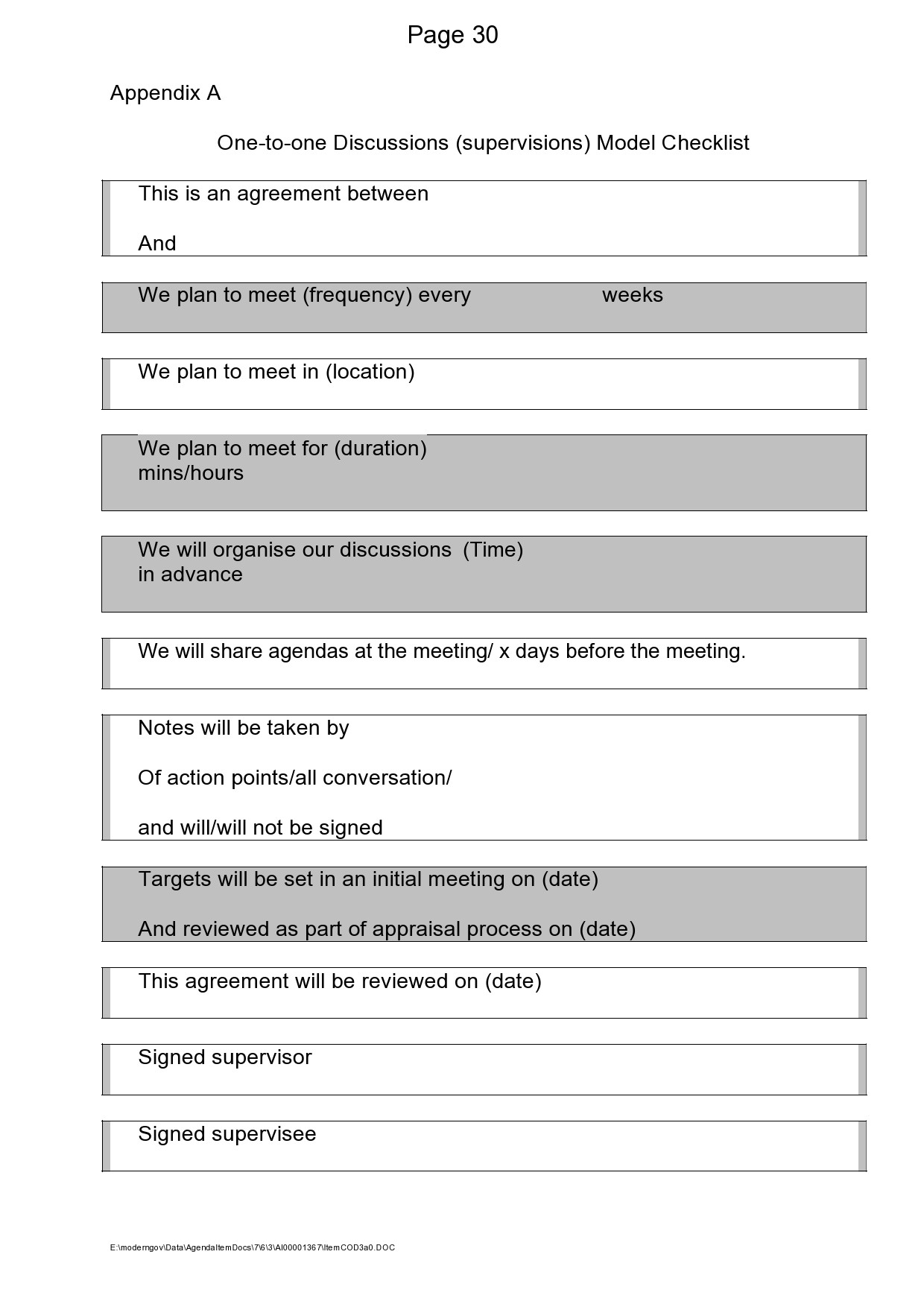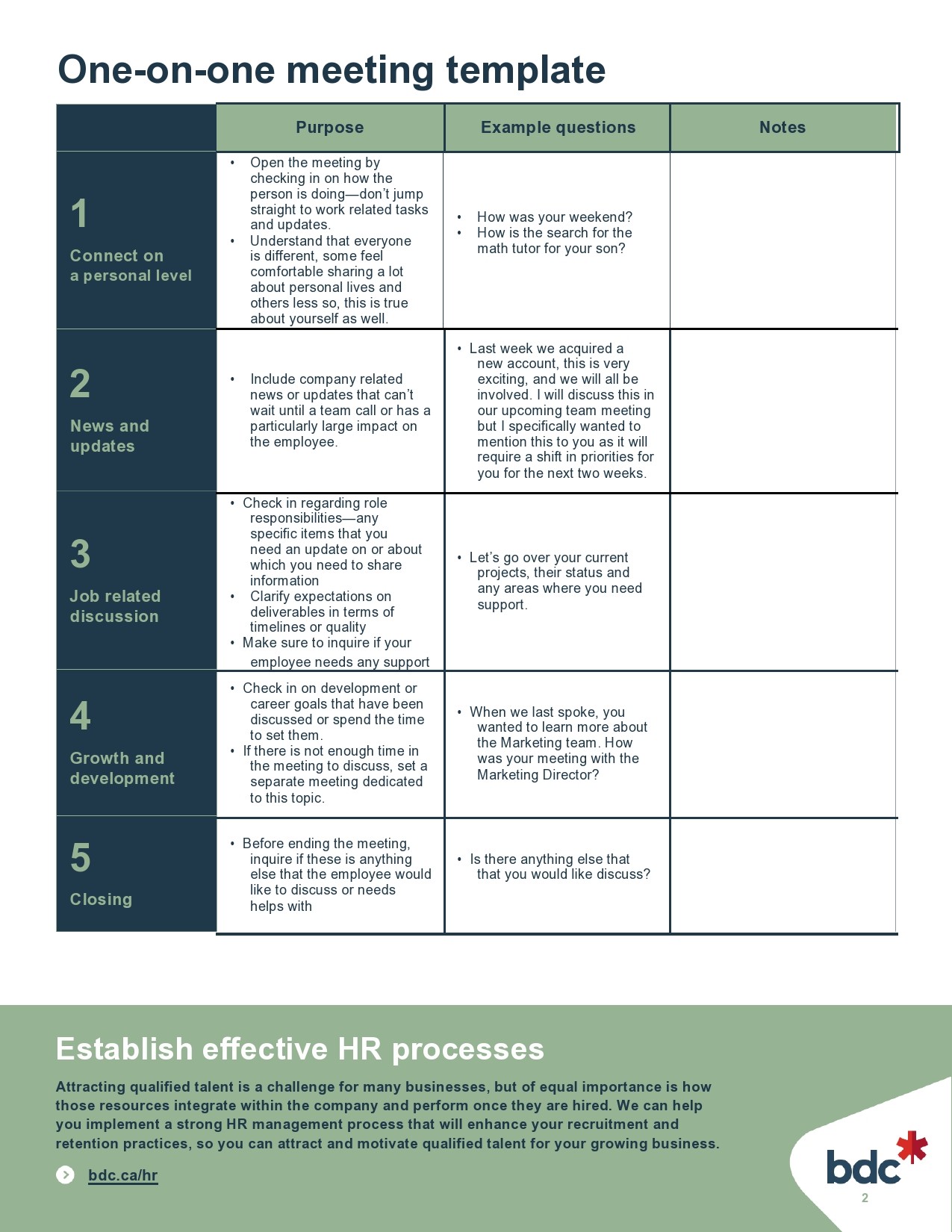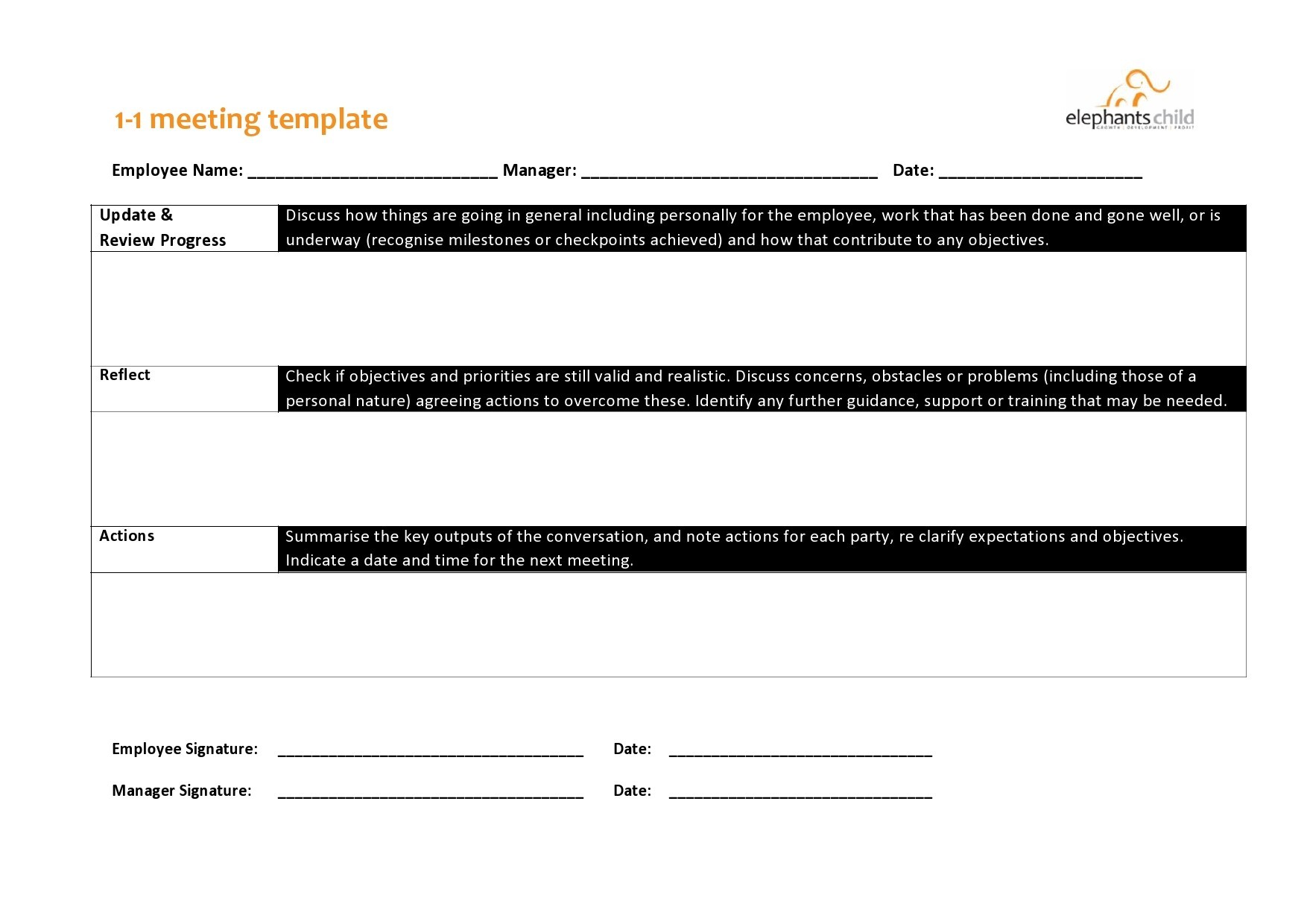Employee One-on One Meeting Template
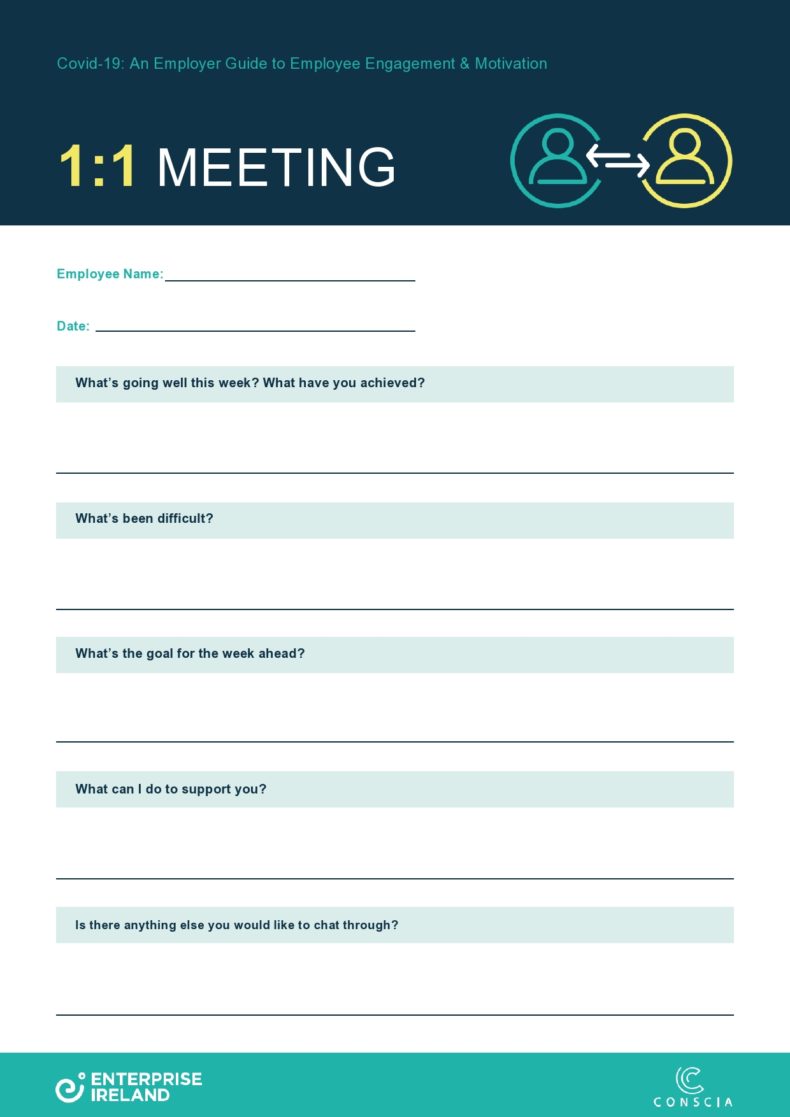
Imagine a workplace where every employee feels heard, valued, and understood. Where concerns are addressed proactively, and growth opportunities are clear. This isn’t a utopian dream, but a tangible reality fostered by a well-structured tool: the employee one-on-one meeting template.
The heart of this transformation lies in a simple yet powerful concept: regular, focused conversations between managers and their team members. An effective employee one-on-one meeting template provides a framework for these discussions, ensuring they are productive, engaging, and geared towards employee development and organizational success.
The Genesis of One-on-One Templates
The traditional top-down management style, where directives flowed unidirectionally, is steadily giving way to a more collaborative and employee-centric approach. Recognizing that engaged and supported employees are more productive and innovative, organizations started exploring methods to foster better communication and build stronger relationships.
One-on-one meetings, while not a novel idea, have been revitalized by the development of structured templates. These templates ensure that important topics are consistently addressed, preventing conversations from veering off-track and maximizing the value of the limited time available.
What Makes a Good Template?
A good employee one-on-one meeting template is not a rigid script, but rather a flexible guide. It should encourage open dialogue and allow for personalization based on the individual employee's needs and role.
Key components often include: Check-in (how the employee is doing), Review of Priorities (progress on current tasks), Challenges and Roadblocks (identifying and addressing obstacles), Feedback (both giving and receiving), Professional Development (discussing growth opportunities), and Action Items (clearly defined next steps).
Harvard Business Review emphasizes the importance of tailoring the template to the specific context, stating that "a one-size-fits-all approach rarely works" and that successful meetings are "purposeful and consistent."
Benefits for Employees
For employees, one-on-one meetings offer a dedicated space to voice concerns, share ideas, and receive constructive feedback. This can significantly boost morale, improve job satisfaction, and foster a sense of belonging.
Knowing that their perspectives are valued and their development is supported can empower employees to take ownership of their work and contribute more effectively to the team's goals.
Benefits for Managers
Managers also reap significant benefits from using one-on-one meeting templates. These meetings provide valuable insights into employee performance, identify potential problems early on, and strengthen team cohesion.
By actively listening to their team members and addressing their concerns, managers can build trust, foster a more collaborative work environment, and improve overall team performance. Data from Gallup suggests that managers who prioritize employee engagement see a significant increase in productivity and profitability.
Implementing a Template: Best Practices
Implementing an employee one-on-one meeting template is more than just downloading a document and scheduling a meeting. It requires a thoughtful approach and a commitment to consistency.
Preparation is key: Both the manager and the employee should come prepared with topics to discuss. Active listening is crucial: Managers should focus on understanding the employee's perspective and asking clarifying questions. Follow-up is essential: Action items should be tracked and completed in a timely manner to demonstrate accountability and build trust.
“The key to a successful one-on-one is creating a safe space for open and honest communication,”according to *Forbes*. “Employees need to feel comfortable sharing their thoughts and concerns without fear of judgment or reprisal."
Beyond the Template: Cultivating a Culture of Communication
While an employee one-on-one meeting template is a valuable tool, it's important to remember that it's just one piece of the puzzle. The ultimate goal is to cultivate a culture of open communication and continuous feedback throughout the organization.
This requires a commitment from leadership to prioritize employee development and foster a workplace where everyone feels empowered to share their ideas and concerns. This can be reinforced through team-building activities, regular feedback sessions, and opportunities for professional growth.
The effective implementation of an employee one-on-one meeting template can transform a workplace, creating a more engaged, productive, and supportive environment for everyone.
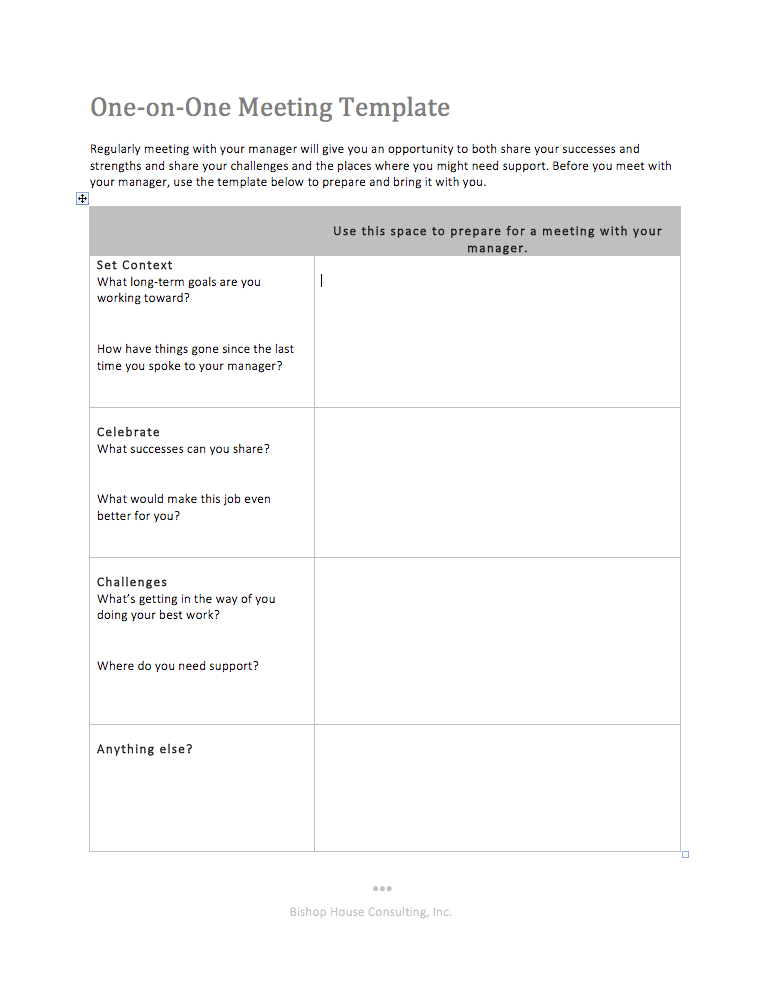
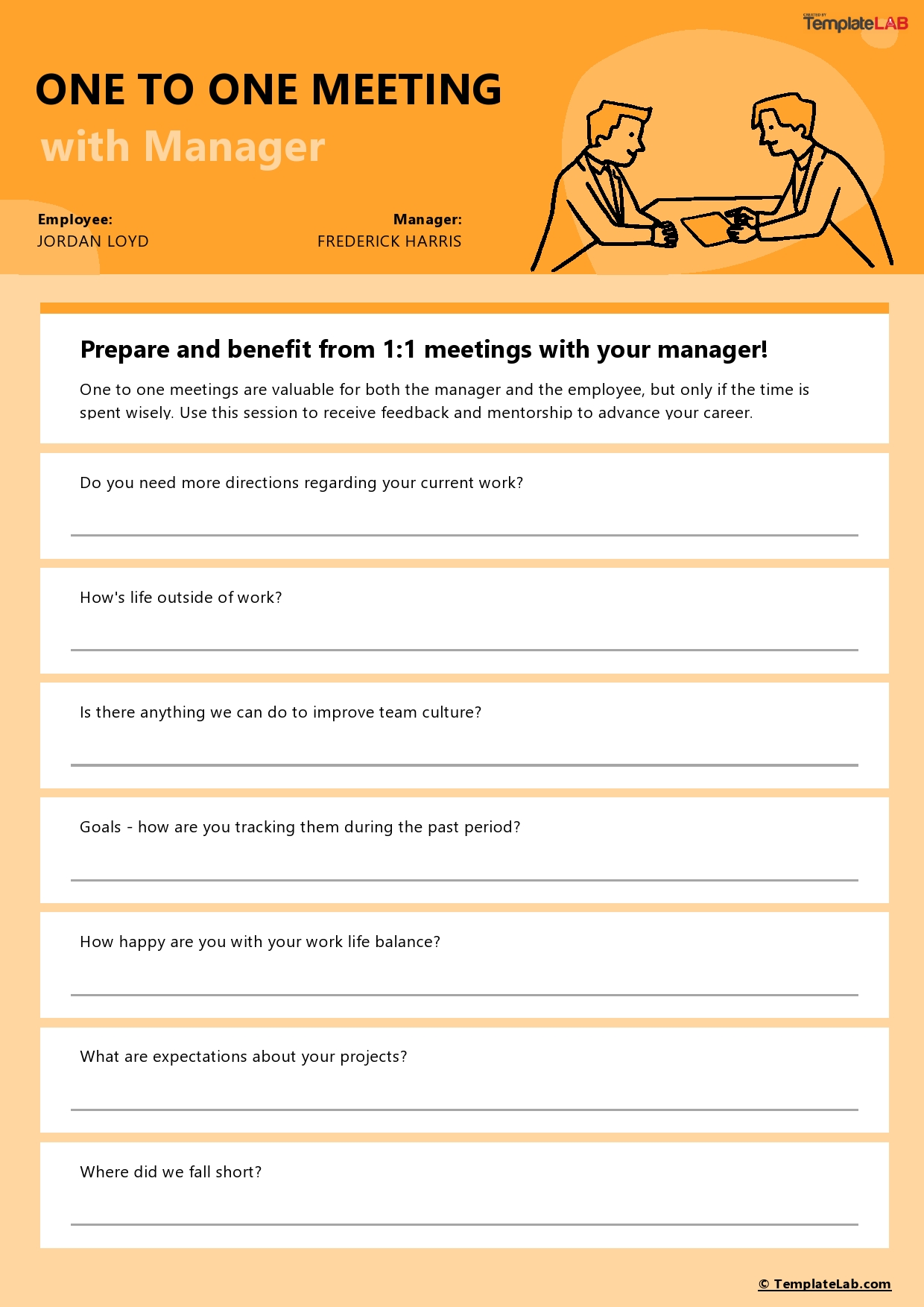
![Employee One-on One Meeting Template Free Printable One To One Meeting Templates [PDF, Word, Excel]](https://www.typecalendar.com/wp-content/uploads/2023/05/one-to-one-meeting-template-word.jpg?gid=270)

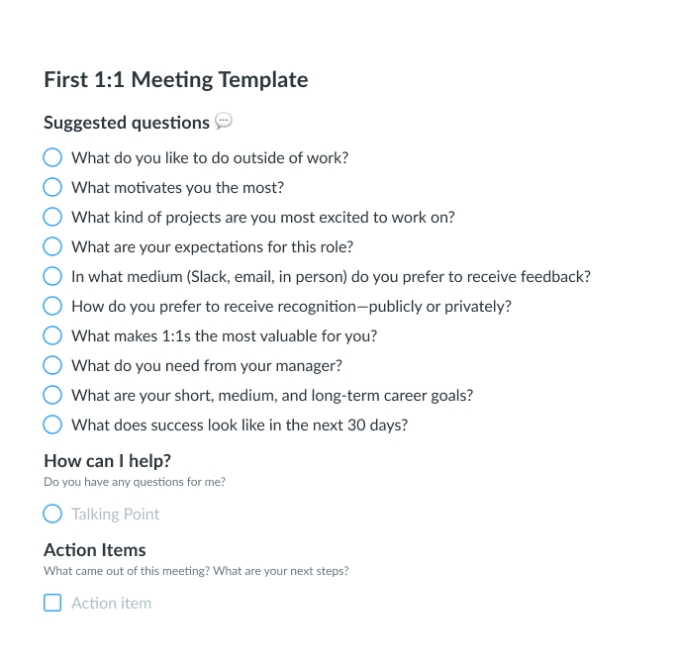


![Employee One-on One Meeting Template Free Printable One To One Meeting Templates [PDF, Word, Excel]](https://www.typecalendar.com/wp-content/uploads/2023/05/1-to-1-meeting-agenda-template.jpg?gid=270)
